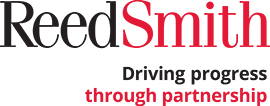Introduction
The One Big Beautiful Bill Act (the OBBBA) was signed into law by President Donald Trump on July 4, 2025. In an effort to further encourage investment in start-up and early-stage domestic corporations, the OBBBA expands the benefits potentially available with respect to qualified small business stock (QSBS) issued after the date of enactment of the OBBBA (i.e., July 4, 2025). This alert summarizes the key changes to the QSBS provisions. For QSBS issued on or prior to July 4, 2025, the prior QSBS rules will continue to apply.
Tiered exclusion for QSBS gain beginning at three-year holding period
Prior to the OBBBA, non-corporate taxpayers could exclude from gross income up to 100% of the gain from the sale or exchange of QSBS held for more than five years, subject to certain limitations. The OBBBA permits taxpayers who hold their QSBS for less than five years the ability to exclude a percentage of the gain from the sale or exchange of QSBS acquired after the applicable date (i.e., July 4, 2025). Specifically, non-corporate taxpayers may exclude from gross income (i) 50% of the gain from the sale or exchange of QSBS held for at least three years, (ii) 75% of the gain from the sale or exchange of QSBS held for at least four years, and (iii) 100% of the gain from the sale or exchange of QSBS held for at least five years.
Example: A non-corporate taxpayer acquires 1,000 shares of stock in Corporation A for $1 million on July 5, 2025. On July 10, 2028, the taxpayer sells 500 shares of stock in Corporation A for $5 million, resulting in $4.5 million of gain. Assuming the stock issued by Corporation A to the taxpayer meets the requirements of QSBS, the taxpayer would be able to exclude $2.25 million from federal gross income (50% of $4.5 million) because the taxpayer held the stock for at least three years. As under pre-OBBBA law, the excluded gain is not subject to the federal alternative minimum tax. If the stock was instead acquired on July 1, 2025, and sold on July 10, 2028, the taxpayer would not be eligible to exclude any of the $2.25 million of gain because the stock was issued prior to the applicable date and was not held for more than five years.
Increase in gain exclusion cap
Prior to the OBBBA, the amount of gain that could be excluded from gross income by a taxpayer on the sale or exchange of QSBS was limited to the greater of $10 million or 10 times the taxpayer’s aggregate adjusted bases (generally determined on the date of issuance) in the QSBS. The OBBBA retains the “greater of” test but increases the $10 million limitation to $15 million with respect to QSBS acquired by the taxpayer after the applicable date, with that amount adjusted for inflation beginning in 2027.
Example: A non-corporate taxpayer acquires 1,000 shares of stock in Corporation A for $1 million on July 5, 2025. On July 10, 2028, the taxpayer sells 500 shares of stock in Corporation A for $21 million, resulting in $20.5 million of gain. Assuming the stock issued by Corporation A to the taxpayer meets the requirements of QSBS, the taxpayer would be able to exclude $10.25 million of gain (50% of $20.5 million) since the excluded gain is less than the $15 million exclusion cap.
Increase in aggregate gross assets limitation
Prior to the OBBBA, for stock issued by a corporation to be eligible for QSBS treatment, the aggregate gross assets of the corporation could not exceed $50 million before or immediately after the issuance of such stock. The OBBBA increases this aggregate gross assets limitation amount to $75 million with respect to stock issued after the applicable date, with that amount adjusted for inflation beginning in 2027.
Example: A non-corporate taxpayer acquires 1,000 shares of stock in Corporation A on July 5, 2025, and immediately after the issuance, Corporation A’s aggregate gross assets for QSBS purposes total $60 million. Assuming the stock issued by Corporation A to the taxpayer otherwise meets the requirements of QSBS, the stock issued to the taxpayer would be eligible for QSBS treatment on a later sale since Corporation A’s gross assets do not exceed $75 million before or immediately after the issuance of the stock to the taxpayer. If the stock was instead issued prior to July 5, 2025, it would not be eligible for QSBS treatment because the aggregate gross assets of Corporation A exceed $50 million immediately after the issuance.
Client Alert 2025-191
